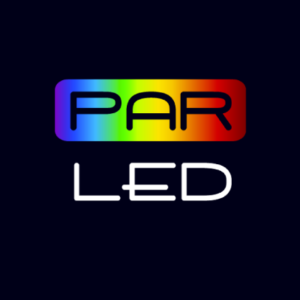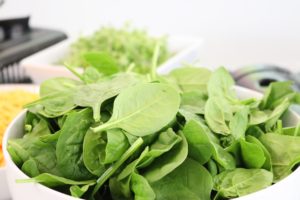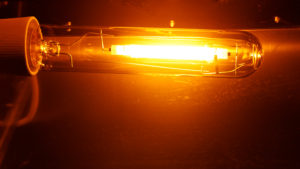How to Measure LED Grow Lights
If you’ve looked at our guide on lux levels, you already know a bit about how to measure illumination. When it comes to grow lights, HID and fluorescent lights are more ‘classic’ lighting technology, so they’re easier to measure. This guide shows you how to measure LED grow lights, so you can pick the best one for the best yields.
Is an LED Grow Light Better with Higher Wattage?
Not necessarily. While watts measure the energy demands of appliances, they don’t actually tell you how much light comes out. Not only that, watts don’t tell you about the intensity, concentration, or direction of the illumination either.
With more efficient lighting technology, like LEDs, watts are becoming more outdated as a way to measure illuminance. If you’re looking at watts, it should be to make sure you’re not draining electricity or getting lights that might run too hot.
With LEDs, higher wattage can actually signal less efficient lighting, and less luminous output.
How to Choose and Measure LED Grow Lights
Now that you’ve switched gears from relying on watts, we’ll help you decode that new grow light you’re looking at.
Many grow light manufacturers specify different measurements of light output. When it comes to LEDs, lux is a common measurement but you’ll also see lumens or even PAR. There’s another one to watch out for: PPFD. This is Photosynthetic Photon Flux Density. Where PAR measures Photosynthetic Active Radiation (wavelengths plants can use), PPFD shows how much of the PAR lands at the plants.
The measurement for PPFD is μmol/m2/s, which means micromoles per square meter, per second.
The good news is you can convert PPFD to lux, and vice versa. While it isn’t an absolute measure, it’s pretty close. However, it still depends on the wavelengths the light gives off (the part of the spectrum), and the rating of the light changes the result.
For example:
A blue LED light (at 450 nm), may have 500 PPFD. The lux is 4,327.
A red LED light (at 650 nm) may also have 500 PPFD. However, the lux is 6,506.
An LED light that combines both with 500 PPFD, at 450 nm and 650 nm, has a lux level of 5,635 lux.
As you can see, your lux levels vary depending on the type of light you select. If you want to get more technical, you’ll also want to determine DLI (Daily Light Integral) for your plants. DLI essentially tells you the best amount of light for each type of plant per day.
Look at the different light measurements
Manufacturers always include wattage in their grow lights, but the other measurements vary. Some may include lux, lumens, PAR, PPFD, or any combination of them. Ideally, you’ll be able to see a couple different measurements to compare the light’s illumination.
It’s not only illumination measurements you should look at. You need to check for spacing charts too. Not all grow lights show these, but it’s very helpful when they do. Look for the intended grow area size, and recommended distance from plants.
Some LED lights have a chart that shows lux levels or PPFD at certain distances from the light itself. These are a great way to plan your crop, and make sure you’re already set up for optimal lighting.
Don’t be afraid to ask questions
It’s no secret that as hydroponics and indoor gardening become more common, so do low quality products in the market. If a manufacturer doesn’t provide any details outside of wattage, it can be a sign of a less professional product. However, that isn’t always the case. You might be surprised with all the details you can gain from a quick comment or email.
Manufacturers should know everything about their product, and that includes light output. Ask for specifics, like the angle of illumination, intended area size, lux levels, and any information about wavelengths (and spectrum distribution).
Find a balance with your budget
As the saying goes, you get what you pay for. If a light that puts out 35,000 lux comes at a dirt cheap price, you might want to dig into some details. That isn’t to say you can’t get great grow lights at a fair price. Just be aware of imitation products from unscrupulous companies.
It’s always best to start looking for grow lights when you have your needs planned out, and a price range in mind. Start by figuring out how many plants you want to grow, what kind of light they need, and how much room you have in your grow area.
Should You Get a Light Meter?
That’s a personal choice, but if you want to really optimize your yields, it’s a small investment for a big advantage. If you know all the specs about your lights, you may be able to get away with not using one. Either way, you can’t really measure LED grow lights without one.
It’s more commonplace in commercial grows to use a light meter. However, using a light meter is a good idea. Even if your plants are growing well, when you use a light meter, you can ensure your lights are perfectly positioned. In turn, that shows where there might be light deficiencies in your grow area. If a plant or two isn’t thriving like the others, you can measure the light falling on those particular plants. When you compare that to the readings of the other plants, you can see if there’s a problem. If illumination isn’t uniformly spread across all plants, use a reflector, supplemental lighting, or slightly reposition your lights until each plant gets close to the same amount.
Frequently Asked Questions
Does wattage make a difference with HID or fluorescent grow lights?
Wattage does make a difference with either fluorescent or HID grow lights. However, it’s a little different than with LED lights. Watts still tell you how much power the light needs to work, and can also give you an indication of the heat they may give off. With that said, it’s still better to choose your lights by another measurement, like PAR, lux, lumens, or PPFD.
What kinds of light meters can I use?
Like any other monitoring tool you use for your hydroponic system, there are plenty of different choices. When it comes to measuring illumination, Lux and PAR meters are the most common. The good news is that either is fairly affordable, and does the job, depending on the measurements you’re interested in. You may even find a dual meter, although you can always convert your readings if you have a single measurement meter.
What light wavelength do my plants need?
Depending on the type of plant, they need slightly different things. Plants that don’t grow flowers or fruit (or that aren’t grown for those), don’t need much red light. Examples include basil, lettuce, and spinach. For those, blue light is the most important, around 450 nm (nanometers). In the vegetative stage, most plants need light close to this wavelength. However, when plants start flowering and fruiting, they need more red light, around 650-700 nm.
Learn more about the light your plants need here.



